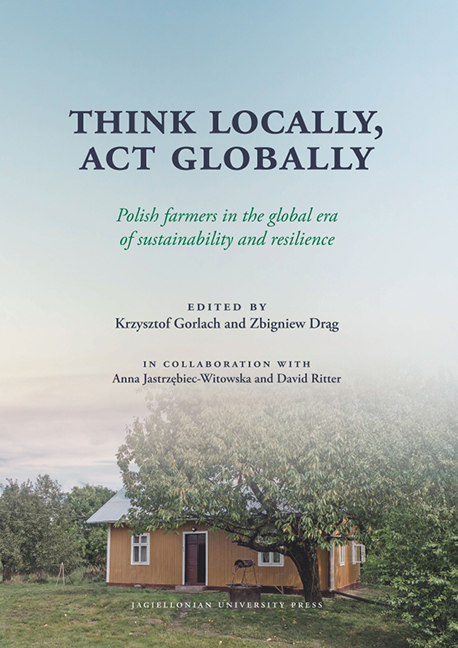Book contents
- Frontmatter
- Contents
- Family Farming: A foreword
- An Introductory Letter from the First Editor: Where the horses, cows, and even cats had their own names
- Part One Theoretical and Methodological Considerations
- Part Two Changes in the Post-Communist Transformation
- Part Three Diversification of Farmers’ Strategies
- Part Four Some Independent Studies
- Conclusion: Some Final Remarks from the First Editor
- Afterword: Renewing a Sociology of Agriculture
- Biograms
Chapter Four - Family Farms in 2017: Drawing of the sociological portrait
Published online by Cambridge University Press: 16 July 2022
- Frontmatter
- Contents
- Family Farming: A foreword
- An Introductory Letter from the First Editor: Where the horses, cows, and even cats had their own names
- Part One Theoretical and Methodological Considerations
- Part Two Changes in the Post-Communist Transformation
- Part Three Diversification of Farmers’ Strategies
- Part Four Some Independent Studies
- Conclusion: Some Final Remarks from the First Editor
- Afterword: Renewing a Sociology of Agriculture
- Biograms
Summary
Introductory Remarks
The following chapter aims to present the characteristics of, and processes taking place in, the family farm owners and operators category in 2017 Poland, and starts the second part of this entire publication. As was already indicated in Chapter 2 describing the study's methodology, the research conducted in 2017 had a larger population sample and somewhat different selection criteria than that of previous editions. Therefore, direct, in-depth analyses and comparisons between the research editions might not be adequate or even possible. Nevertheless, on a more general level, the attempts to compare the findings from the 1994 and 2017 studies seem legitimate. In 1994 (see Gorlach, 1995) the research concept and presentation of family farms was elaborated in Poland for the first time after the political breakthrough of 1989. For research purposes, a stratified sample was randomly selected to represent a large poll of farms. Later analyses in 1999 and 2007 used the panel study methodology with the population sample chosen in advance in 1994. The trends, regularities and changes described in Chapter 3, which closes the first part of this publication, did not fully represent the entire population of family farms in Poland but only a specific category of farms selected in 1994, which were then studied consecutively, in 1999 and 2007.
It could be said that having the new population sample in the 2017 research has allowed for a different perspective. It is not a detailed analysis of the processes taking place in the selected category of farmers, as more research at various times should have been conducted to achieve such a goal. This new look could, however, be helpful in illustrating the change that occurred within the perspective of almost a quarter of a decade. Juxtaposing some research results from 1994 and 2017 could provide a valuable contribution to the reflection on family farms in Poland.
The main idea of this chapter is to offer an approach to the category of farm owners and operators that would help to identify the change that occurred in the time frame indicated above. To use the painting metaphor, it could be said that the second part of this publication, beginning with this chapter, is about presenting a family portrait of farms in Poland.
- Type
- Chapter
- Information
- Think Locally, Act GloballyPolish farmers in the global era of sustainability and resilience, pp. 225 - 250Publisher: Jagiellonian University PressPrint publication year: 2021



